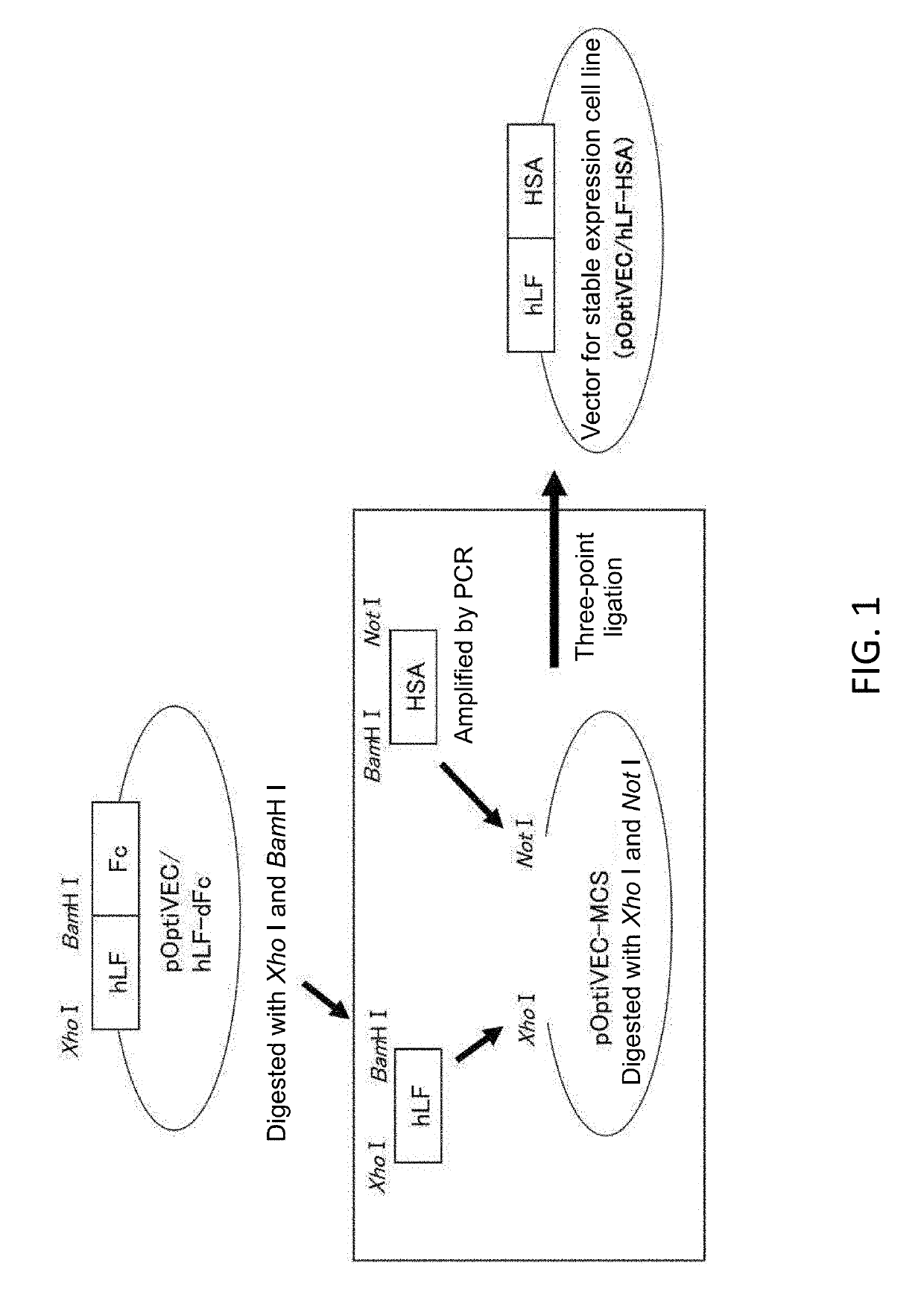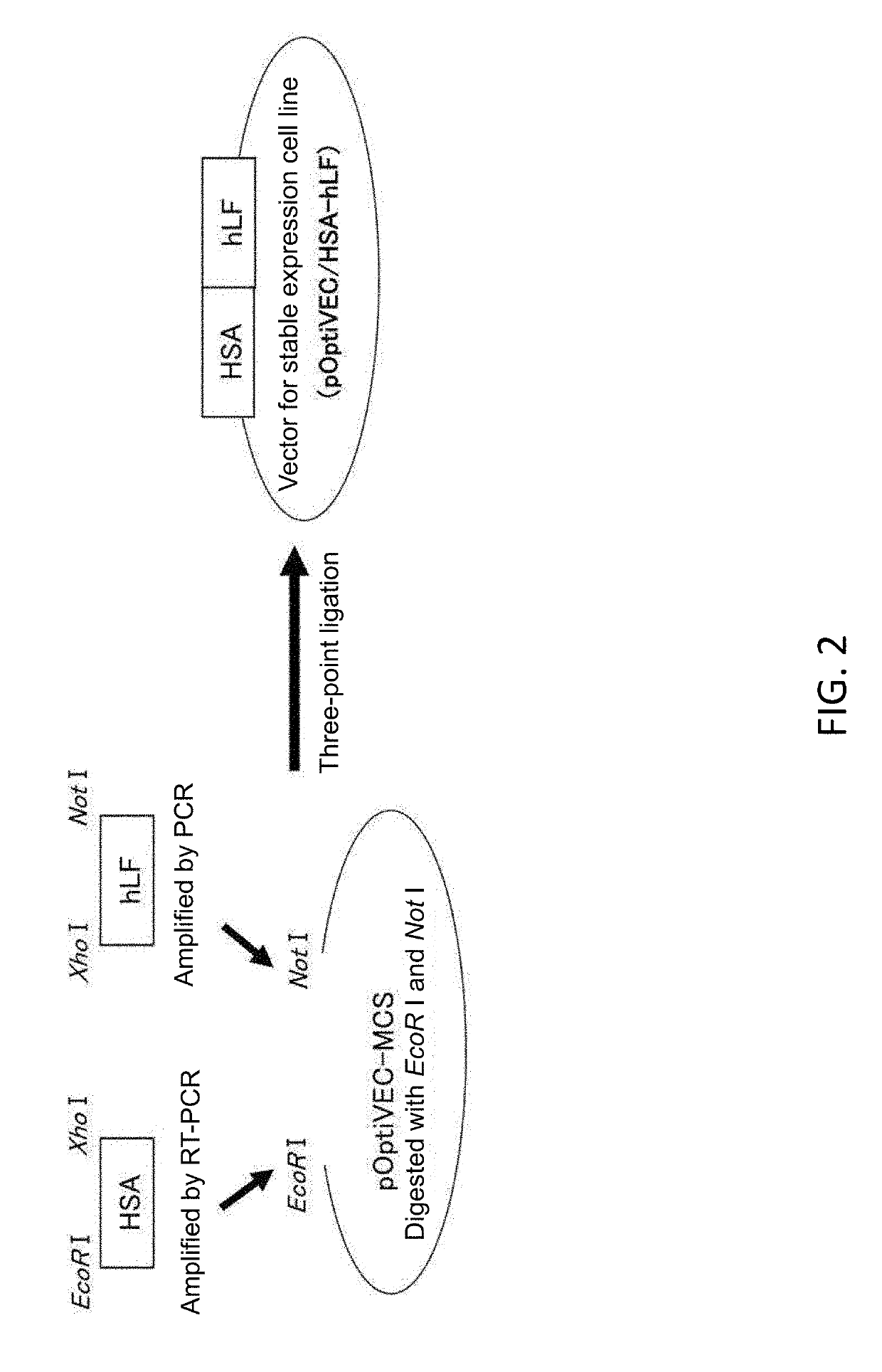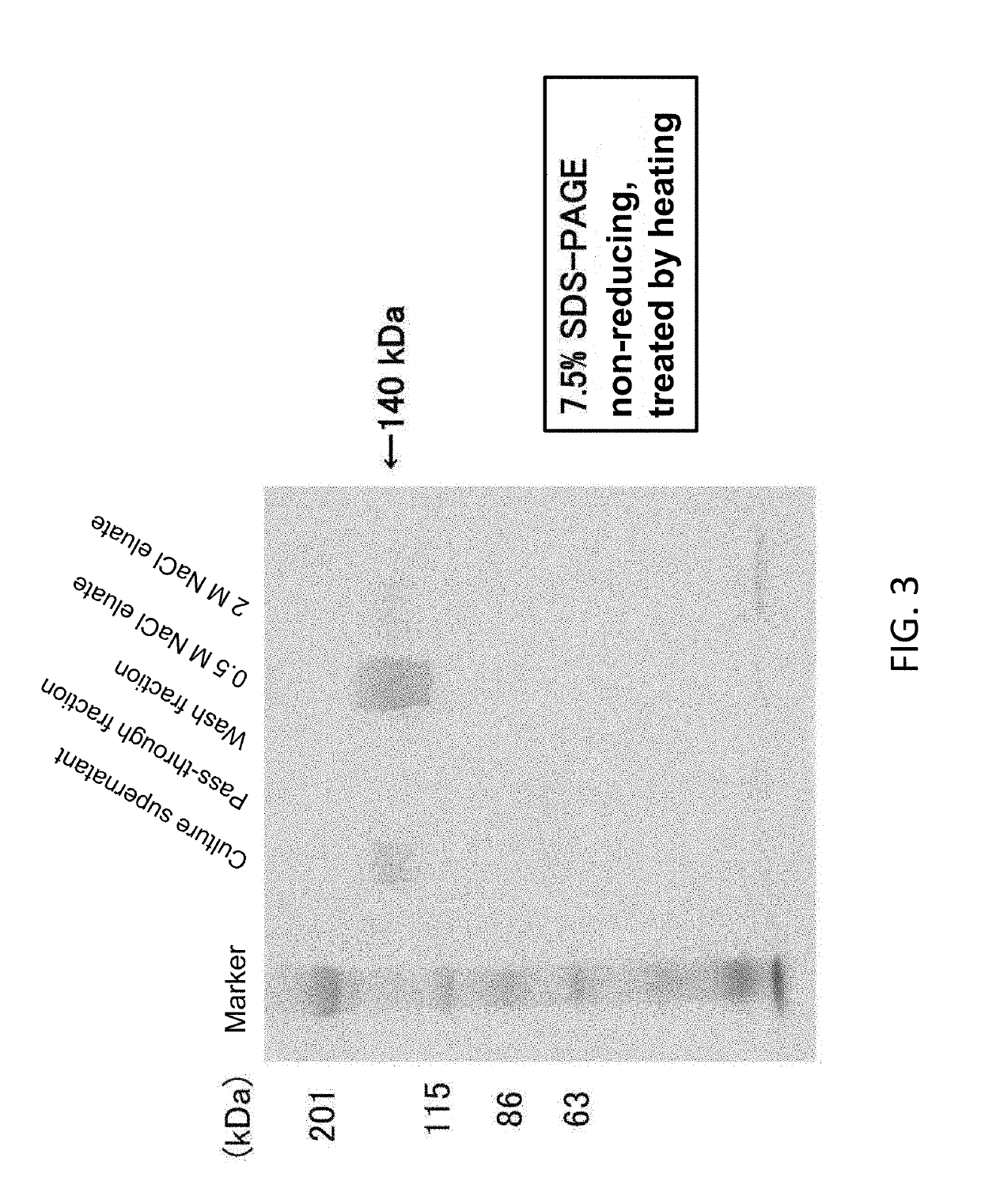Lactoferrin/albumin fusion protein and production method therefor
a technology of lactoferrin and fusion protein, which is applied in the direction of transferrins, drug compositions, antinoxious agents, etc., can solve the problems of complex steps, low stability of injections, and lactoferrin degradation in blood, so as to reduce the risk of toxicity, suppress the effect of metastasis, and wide range of biological activities
- Summary
- Abstract
- Description
- Claims
- Application Information
AI Technical Summary
Benefits of technology
Problems solved by technology
Method used
Image
Examples
example 1
on of Fusion Proteins Between Human Lactoferrin (hLF) and Human Serum Albumin (HSA)
[0086]As to fusion proteins formed between human lactoferrin (hLF) and human serum albumin (HSA), a protein fused such that hLF is located at the N-terminal side and HSA is located at the C-terminal side is designated as hLF-HSA, whereas a protein fused such that HSA is located at the N-terminal side and hLF is located at the C-terminal side is designated as HSA-hLF. Moreover, as used herein, rhLF refers to Aspergillus-derived recombinant hLF.
[0087]1. Construction of a hLF-HSA Expression Vector
[0088]A hLF cDNA fragment comprising a signal sequence was prepared from the known expression vector pOptiVEC / hLF-dFc (Shiga, Y et al., Eur J Pharm Sci. Vol. 67, 136-143, 2015) for DHFR-deficient Chinese hamster ovary cells (CHO [DG44]) by digestion with Xho I and BamH I.
[0089]On the other hand, human HSA cDNA was obtained as follows using the vector pPIC9-HSA-trx (Ikuta, S et al., J Control Release vol. 147, 17...
example 2
nt of the Iron-Binding Ability of the hLF-HSA Fusion Protein
[0103]Lactoferrin (LF) is a nonheme iron-binding glycoprotein having a molecular weight of 80,000, which is composed of two regions called N-lobe and C-lobe, and has the ability to form reversible chelate bonds with two iron ions (Fe3+) per molecule of protein in the presence of carbonate ions (CO32−) (Anderson, et al., Nature, 344, 784-78 (1990)). Prior to iron removal operations, the hLF-HSA and HSA-hLF fusion proteins prepared in Sections 4 and 5 above were each measured for the amount of iron ions (Fe3+) bound thereto with a “Fe C-Test Wako” (Wako Pure Chemical Industries, Ltd., Japan). As a result, Fe′ ions were bound in an amount of 1302 ng for hLF-HSA and 1161 ng for HSA-hLF per mg protein calculated as hLF, which were each almost close to the theoretical value when two iron ions (Fe3+) were bound per molecule of protein (i.e., about 1400 ng of Fe3+ ions were bound per mg of hLF). Thus, the hLF-HSA and HSA-hLF fusion...
example 3
al Study on the Thermal Stability of the hLF-HSA and HSA-hLF Fusion Proteins
[0105]The HSA-hLF and hLF-HSA fusion proteins were analyzed for their thermal stability by circular dichroism (CD) spectrometry. The circular dichroism (CD) spectrometry is a technique to measure a difference in absorbance between right-handed circularly polarized light and left-handed circularly polarized light when a substance is irradiated at a certain wavelength. This technique can be used to predict the presence or absence, type and content of protein secondary structure.
[0106]First, suspensions of Aspergillus-derived recombinant hLF (rhLF), human serum albumin (HSA, Wako Pure Chemical Industries, Ltd., Japan) and the hLF-HSA and HSA-hLF fusion proteins were prepared at 0.1 mg / ml in PBS(−) and measured for their CD spectra at 25° C. at a wavelength of 200 nm to 250 nm (using a circular dichroism spectropolarimeter J-1500, JASCO Corporation, Japan). The results obtained are shown in FIG. 5. The HSA-hLF a...
PUM
| Property | Measurement | Unit |
|---|---|---|
| pepsin resistance | aaaaa | aaaaa |
| nucleic acid | aaaaa | aaaaa |
| size | aaaaa | aaaaa |
Abstract
Description
Claims
Application Information
 Login to View More
Login to View More - R&D
- Intellectual Property
- Life Sciences
- Materials
- Tech Scout
- Unparalleled Data Quality
- Higher Quality Content
- 60% Fewer Hallucinations
Browse by: Latest US Patents, China's latest patents, Technical Efficacy Thesaurus, Application Domain, Technology Topic, Popular Technical Reports.
© 2025 PatSnap. All rights reserved.Legal|Privacy policy|Modern Slavery Act Transparency Statement|Sitemap|About US| Contact US: help@patsnap.com



